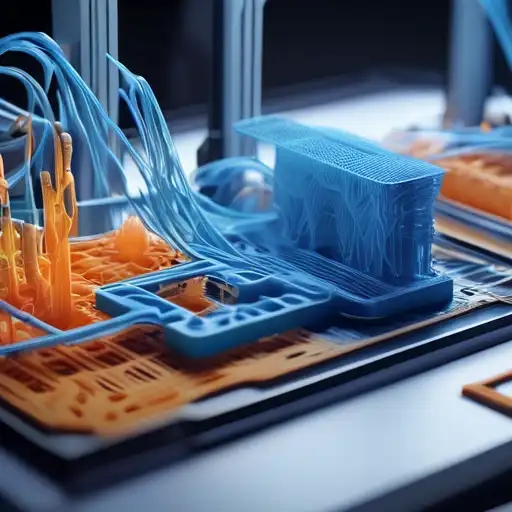Introduction to 3D Printing
3D printing, also known as additive manufacturing, is a process of creating three-dimensional objects from a digital file. This innovative technology builds objects layer by layer, offering unparalleled flexibility in design and manufacturing. From prototyping to production, 3D printing is revolutionizing industries across the globe.
The Process of 3D Printing
The journey of 3D printing begins with a digital model, typically created using computer-aided design (CAD) software. This model is then sliced into thin layers by specialized software, guiding the 3D printer on how to construct the object. Materials such as plastics, metals, and even ceramics are used to bring these digital designs to life.
Types of 3D Printing Technologies
- Fused Deposition Modeling (FDM): The most common method, where thermoplastic filaments are melted and extruded layer by layer.
- Stereolithography (SLA): Uses a laser to cure liquid resin into hardened plastic.
- Selective Laser Sintering (SLS): A laser sinters powdered material, binding it together to create a solid structure.
Applications of 3D Printing
3D printing is not just for prototypes anymore. Its applications span across various sectors including healthcare, where it's used for creating prosthetics and implants, to aerospace, for manufacturing lightweight components. The automotive industry also benefits from 3D printing by producing parts on demand, reducing inventory costs.
Future Prospects
The potential of 3D printing is boundless. With advancements in materials and technology, we're looking at a future where 3D printed organs and buildings could become a reality. The emphasis on sustainability is also driving the adoption of 3D printing, as it minimizes waste compared to traditional manufacturing methods.
Challenges and Considerations
Despite its advantages, 3D printing faces challenges such as high costs for industrial-grade printers and limitations in material choices. However, as technology progresses, these hurdles are expected to diminish, making 3D printing more accessible to a wider audience.
For those interested in exploring 3D printing further, consider starting with a beginner-friendly 3D printing guide to understand the basics and how you can leverage this technology for your projects.
Conclusion
3D printing is undeniably shaping the future of manufacturing, design, and innovation. By enabling the creation of complex, customized, and lightweight structures, it offers a glimpse into a future where the only limit is our imagination. As we continue to explore the possibilities of 3D printing, it's clear that this technology will play a pivotal role in driving forward the next industrial revolution.
